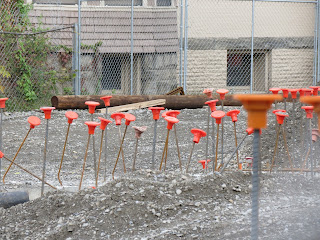For a while there, it felt like Future Environment Designs was traveling all over the place. We were in Plattsburgh/Montreal area at the end of June. We were in Ohio/Michigan for the 4th of July week. Then we were on Lake Ontario the week after. We also developed two new online courses that allowed us to initiate a new training service. The two new online (e-learning) courses are the Occupational Safety and Health Administration (OSHA) Hazard Communication and the New York State Right-to-Know Hazard Communication training courses. Both courses were developed to meet the training requirements in the OSHA Hazard Communication standard (1910.1200). While the NYS Right-to-Know course meets the New York State Right-to-Know training requirements in New York State Labor Law Section 551, Articles 48 and 28 and Title 12 of New York Code of Rules & Regulations Part 820, these laws are enforced by New York State Department of Labor's Public Employee Safety Health (PESH) division, in addition to the OSHA Hazard Communication standard (1910.1200). The addition of these online courses to our training catalog allows us to provide a training subscription service that can meet your annual training requirements under the OSHA standards and New York State laws. In some cases, we can reduce your training costs to $20 per student. Contact us if you are interested.
 |
| Our Display at the NASHC Safety Expo 2019 |
On June 27, 2019, we attended the North Adirondack Safety and Health Council's (NASHC) Safety Expo 2019 at West Side Ballroom in Plattsburgh, New York. The Safety Expo had a short agenda but the presentations were excellent. Our favorite presentation was "Hazards of Working on or Near Energized Electrical Circuits" by Mr. John Olsen, of Blue Collar Safety. His presentation on Arc Flash/Blast was particularly eye-opening. Ms. Lola Miller's (of the Volvo Group) presentation "Preventing Serious Injuries & Fatalities" was also interesting especially since she was using Menti,com to make the presentation interactive. Her presentation was challenging Heinrich's Triangle, which is the theory of industrial accident prevention. It says if you reduce the number of minor accidents there would be a corresponding fall in serious accidents. Her data with working with the Volvo Group did not indicate that. Her view was you need to evaluate Serious Injury & Fatalities (SIF) precursors and make sure these are addressed. There were 15 vendors at the Safety Expo 2019, Reynolds and Son's display had an interesting variety of catalogs including a catalog called Cut Safe. The Cut Safe catalog had a variety of cutting tools that use ceramic technology, visit their website for more information.
 |
| Mr. John Olsen of Blue Collar Safety at NASHC Safety Expo |
 |
| Sunrise on Lake Ontario |
1. Dival - Reel Excitement
2. Cornerstone Training Institute (CTI) - Sunrise 2
3. CTI- Legacy
4. AAC- Shotgun
5. AAC- Troutman
6. NRC- Reflection
7. Abscope- Rusty Lure
8. Future Environment Designs (FEDTC)- Catchin’ Hell
9. SES- Intimidator
10. Aramsco- Pleasure Unit
11. Paradigm - Free Spirit
12. Sienna- Get Hooked
13. Expert - Irish Thunder
14. Expert - Screaming Reels
 |
| My big catch for the day! |
We had the good fortune to catch just enough Salmon & Steelhead to last us the entire year and fill our freezer again! Thank you, Darren Yehl, of Cornerstone, for giving us his catch to add to what we caught! The winners were:
So far the summer has been entertaining but is going quickly and soon it will be fall and the rush for asbestos and mold refresher classes will be on. This year is the 4-year anniversary of Article 32 the Mold Law and most everyone's license will be expiring between September and January 2020. See you soon!






































